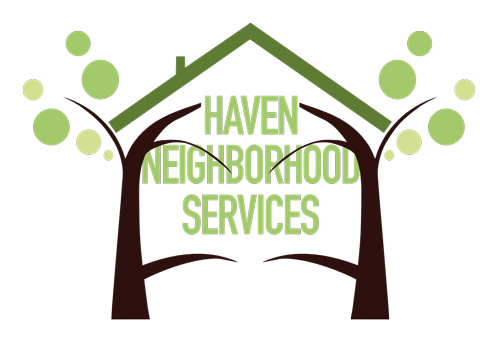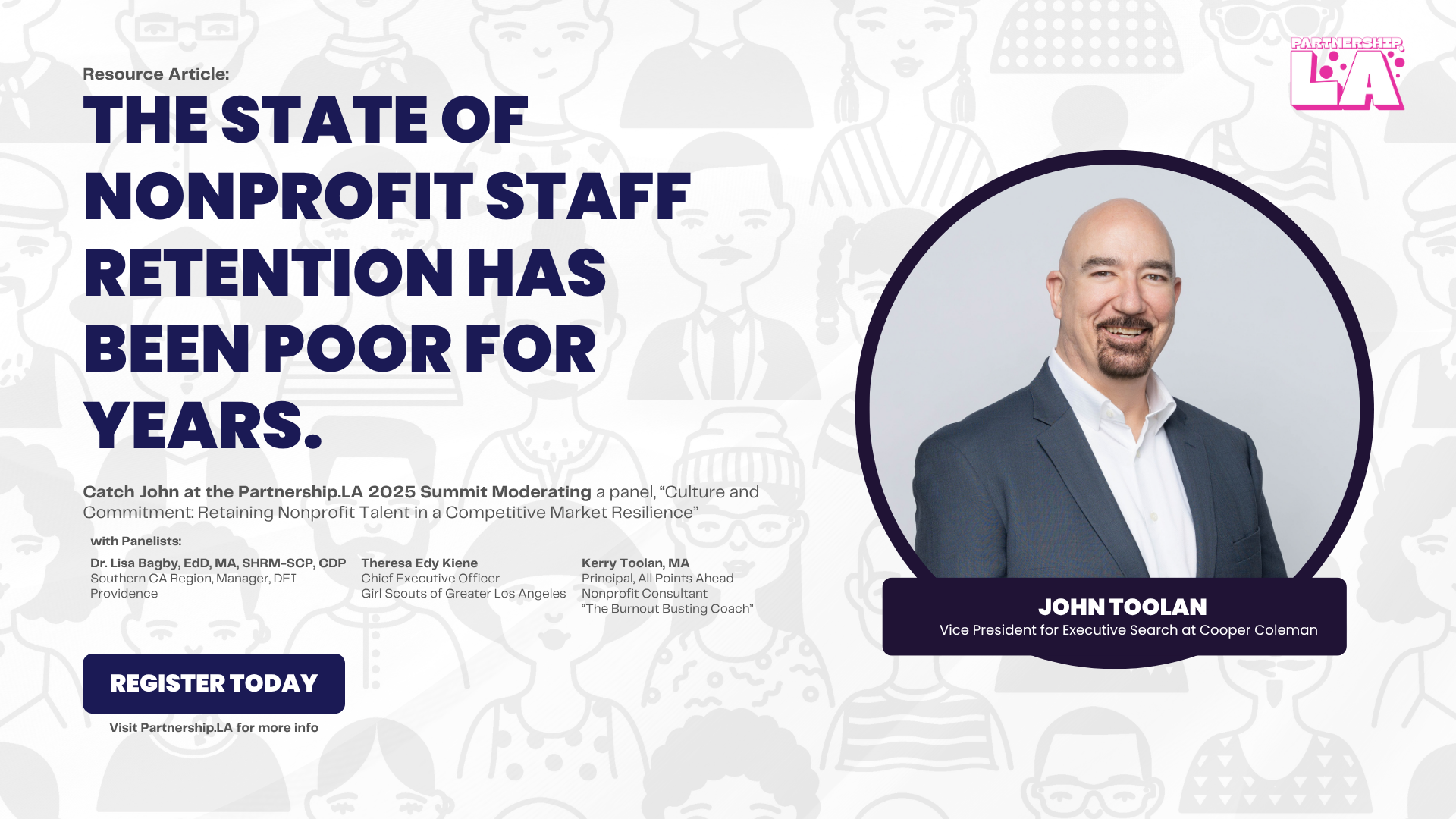By using our website, you agree to the use of cookies as described in our Cookie Policy
News & Resources
The state of nonprofit staff retention has been poor for years.
Article written by John Toolan, Vice President of Executive Search at Cooper Coleman.
According to a 2020 Forbes survey, 45% of nonprofit employees stated they would seek new jobs by 2025, and 23% of that group said that nonprofits would not be among the types of organizations they intend to pursue.
Of the 45% who said they’d seek other employment:
-
49% said nonprofit organizations do not pay enough,
-
19% said nonprofits don’t offer good long-term career opportunities, and
-
12% stated that nonprofits are not well-run businesses.
The fact is that 86% of nonprofits report difficulty retaining their employees, and the annual turnover rate has increased by 10% compared to 2020. Nonprofit organizations have a turnover rate of 19%, which is higher than the all-industry average of 12%.
Replacing employees can cost nonprofits between 90% and 200% of the employee's annual salary. And that does not take into account the institutional knowledge they take with them and the disruption this causes your donor base, staff, and the community you serve.
It is estimated that companies and organizations lose a trillion dollars each year to employee turnover.
So, what is the real culprit?
Is it the salary? Is it the mission? Is it the lack of a hybrid schedule? Or is it something else?
As an executive recruiter who works exclusively with nonprofit organizations, I can tell you what I hear from virtually every candidate that speaks to me about a new opportunity.
It is the culture of the organization.
When I ask them why they are open to hearing about a new role, 99% of the time, it comes down to the culture of the organization they are presently with.
Perhaps you are familiar with the old adage:
“People don’t quit jobs; they quit bosses.”
The candidates I interview are still passionate about the mission of their organization, but they are open to departing because of the way their division or the institution as a whole is being led.
Savvy candidates ask me (and the hiring institution) questions that help them understand the culture of the organization to determine if it is a place where they can thrive and advance their career. And they are right to do so! In some cases, they will spend an equal amount of time with their colleagues as they do with their family and friends.
So, if culture is the culprit, how do you adjust it?
Intentionally.
Recently, I worked with a client to fill a challenging leadership role. It is a small nonprofit offering a tremendous number of social services to the local community with limited staff and a too-small budget. Sound familiar?
During my discovery visits to understand this role—what the various departments needed from it, and the characteristics necessary for success—I learned that most of the leadership team has been in place for nearly eight years. The reason? You guessed it: the culture. These leaders developed and continue to foster a culture that resonates with the staff.
I heard comments like:
-
“Everyone here expresses such gratitude to the other staff members.”
-
“I have never been thanked so much for doing the things in my job description.”
-
“We talk about burnout and how we can help each other avoid it.”
Every one of the people I spoke with (including the Executive Director) is earning well under market rate for the work they are doing, the hours they are committing, and the skillset they possess. Yet, none of them want to leave—because they feel valued.
Changing organizational culture does not have to be expensive—
But it does require an intentional outward mindset starting at the leadership level.
The Arbinger Institute defines an Outward Mindset as a way of seeing others as people who matter like we do—with their own needs, challenges, and objectives—as opposed to obstacles, vehicles, or irrelevancies.
This is in contrast to an Inward Mindset, where we focus only on our own goals and view others primarily in terms of how they help or hinder us.
“With an inward mindset, I focus only on my own needs and objectives. With an outward mindset, I take into account others’ needs, challenges, and objectives.”
— The Arbinger Institute
In their teachings, they demonstrate how this shift can transform organizations by improving collaboration, breaking down silos, and fostering more meaningful leadership and accountability.
My wife, a 30+ year nonprofit leader turned nonprofit consultant, is an Arbinger Institute Facilitator in Developing and Implementing an Outward Mindset, so I have witnessed firsthand the benefits of this type of shift.
What else contributes to a culture of retention?
Diversity, Equity, Inclusion, and Belonging (DEIB) is often a key element.
That is a term we may hear a lot, and we may understand what each letter stands for, but what does each word mean?
-
Diversity: Having employees with different backgrounds, perspectives, and identities (e.g., race, gender, age, abilities).
-
Equity: Ensuring fair access to opportunities and resources; removing systemic barriers for underrepresented groups.
-
Inclusion: Actively creating an environment where all employees feel welcomed, respected, and involved.
-
Belonging: The emotional sense that one is accepted, valued, and truly part of the organization.
The client I referred to earlier embodies this and is benefitting from it. The staff was certainly diverse in many capacities. Additionally, I saw many examples of equity, as well as employees feeling included and valued.
Teams that have an equity focus report up to 19% higher revenues.
How many more people could your nonprofit serve if your revenue increased by nearly one-fifth, while your absenteeism and turnover decreased, and employee satisfaction rose?
Want to go deeper?
If this broad overview of this topic has intrigued you, please attend the Partnership.LA Annual Summit on Friday, August 15, 2025.
I will be moderating a panel of experts who will delve deeper into this topic and provide:
-
Examples of how they have implemented tools to reduce turnover
-
Actionable items that you can apply to your organization
John Toolan
Vice President for Executive Search at Cooper Coleman
Certified Diversity Recruiter







